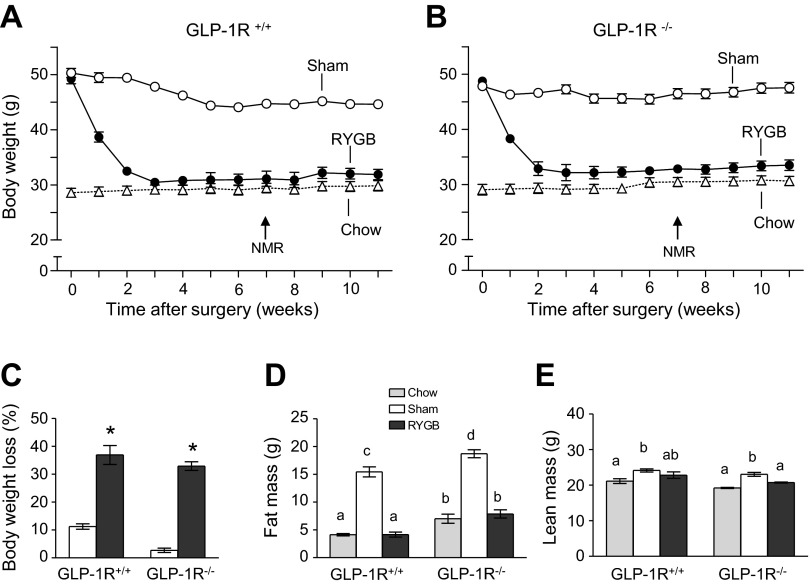Fig. 6.
RYGB-induced reduction in weight loss and food intake is similar in GLP-1 receptor-deficient and wild-type mice. Body weight of wild-type (A) and GLP-1R−/− mice (B) made obese with high-fat diet for 12 wk and subjected to either RYGB or sham surgery. High-fat diet was replaced with medium-fat diet after surgery. Note that the RYGB-induced weight-loss curves are almost identical for the two genotypes. C: percent weight loss at 8 wk after surgery. Note that percent weight loss after RYGB was not significantly different between the two genotypes but significantly greater than after sham operation. The small weight loss in sham-operated animals is due to the switch from high- to medium-fat diet after surgery. Fat mass (D) and lean mass (E) of lean (chow-fed), sham-operated (high-fat obese), and RYGB rats at 7 wk after surgery. Note that all excess fat mass but no lean mass is lost after RYGB. Values are expressed as means ± SE; n = 8–10 mice. Bars that do not share the same letter are significantly different from each other. *P < 0.05 vs. sham.

